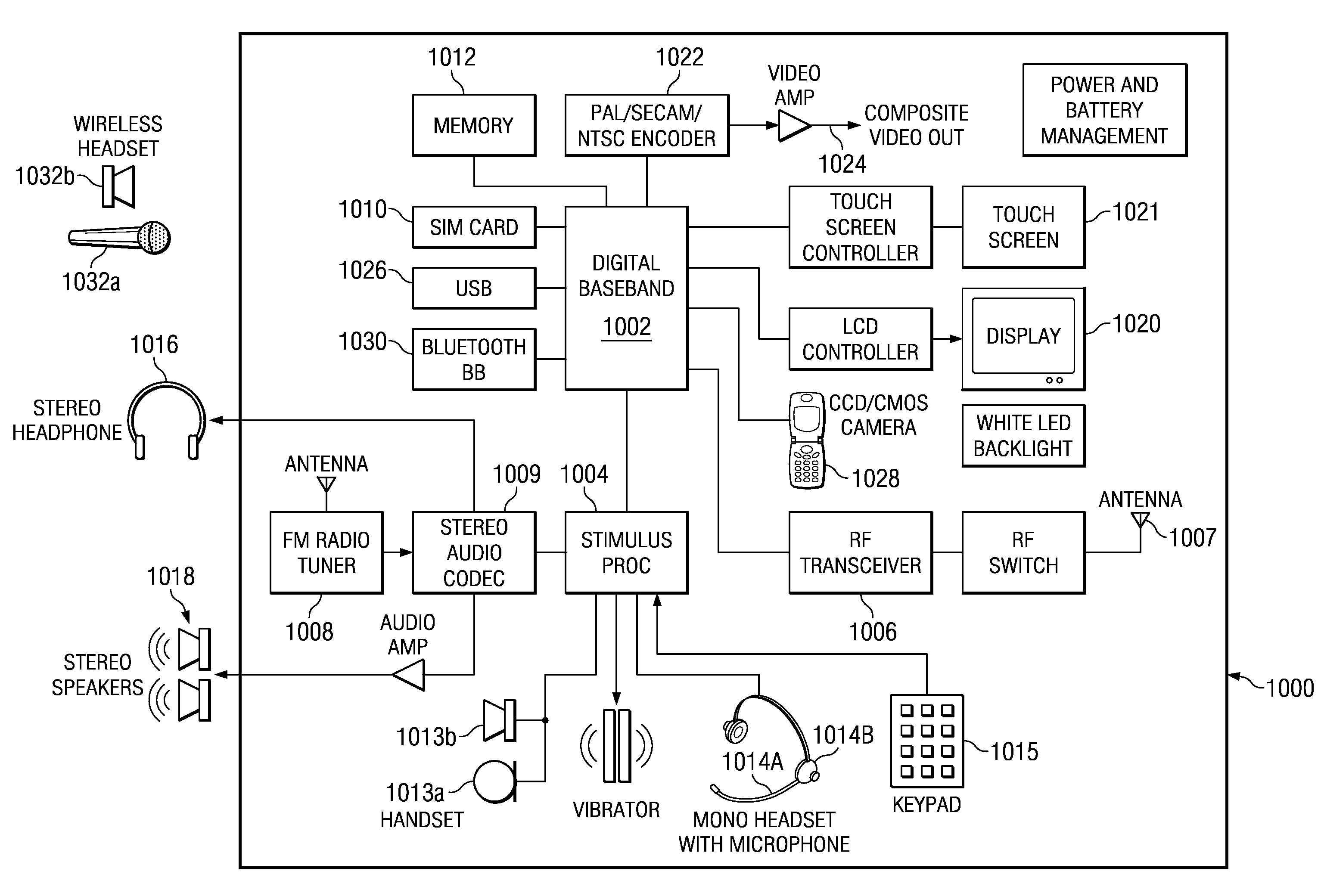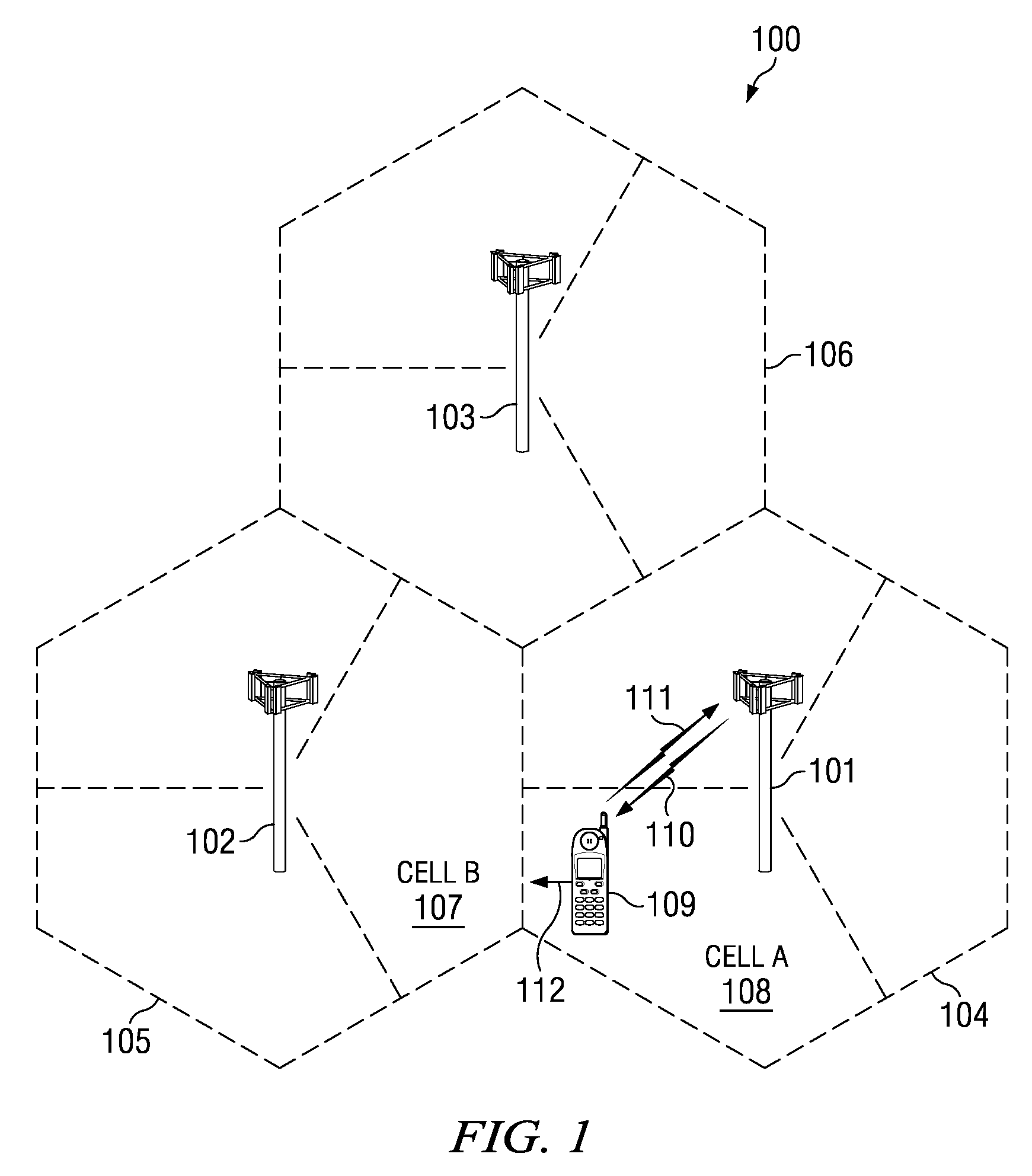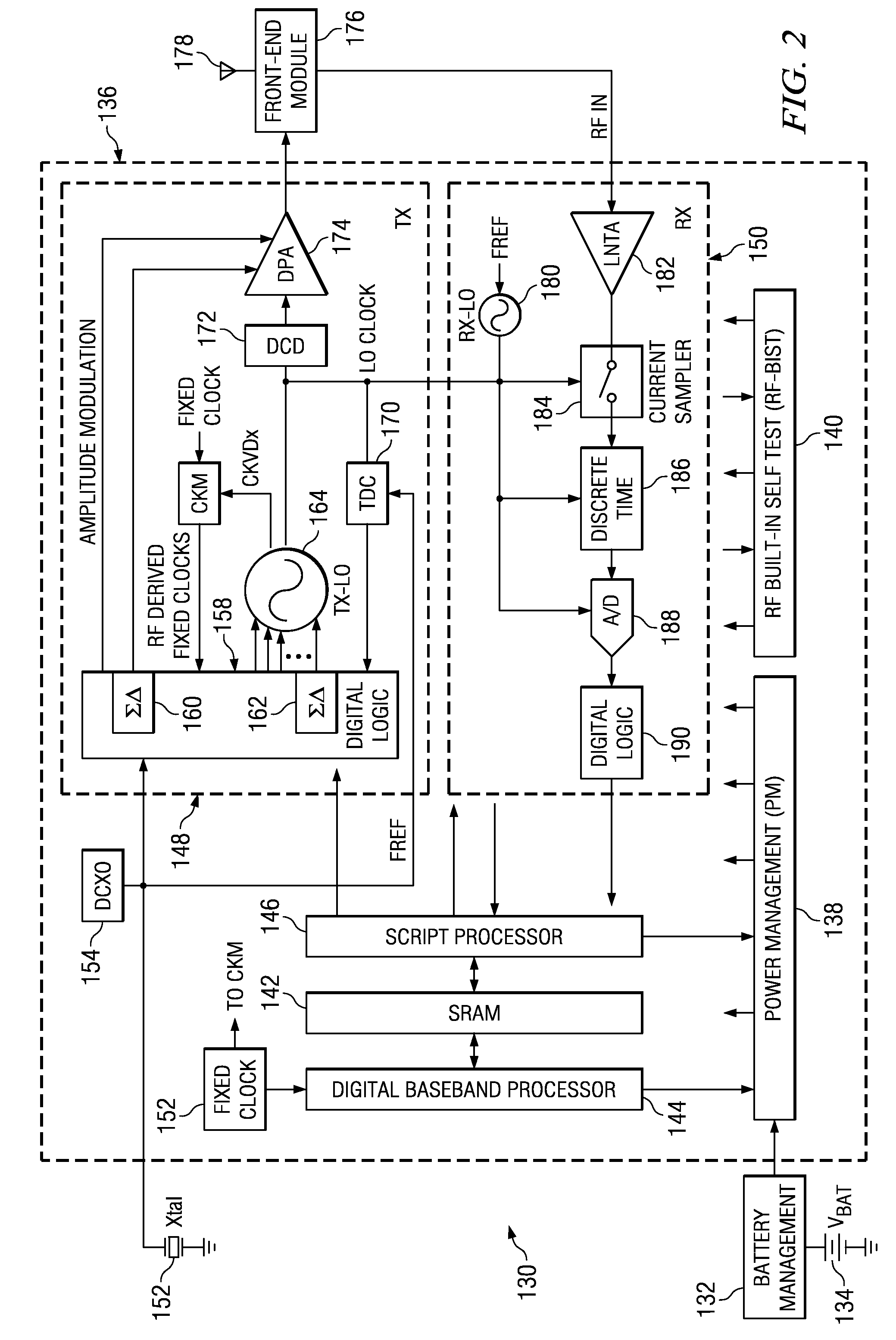Mitigation of RF Oscillator Pulling through Adjustable Phase Shifting
a phase shifting and oscillator technology, applied in the field of radio frequency transmitters and data communications, can solve the problems of modulation distortion, inability to cost effectively add features and reduce footprint, and inability to meet the design challenges of advanced processes,
- Summary
- Abstract
- Description
- Claims
- Application Information
AI Technical Summary
Benefits of technology
Problems solved by technology
Method used
Image
Examples
Embodiment Construction
[0025]Embodiments of the present invention provide for mitigation of frequency-pulling of a digitally controlled oscillator (DCO) due to pre-power amplifier (PPA) activity. An adjustable phase delay is provided between the DCO and the PPA. In one embodiment, the adjustable phase delay is provided through a chain of inverters. The delay may be calibrated using a phase error (PHE) signal from a phase detector in a phase locked loop (PLL) that forms the DCO. The PHE reflects the extent of parasitic modulation suffered by the DCO as a result of pulling; hence the variance of this signal, as well as other properties of it extracted through appropriate processing, can be used to sense the extent of pulling and calibrate for optimum delay. In one embodiment, this delay is calibrated in the center of the Digital Cellular System (DCS1800) and Personal Cellular System (PCS1900) bands. Frequency-dependent fine-tuning of the delay, referred to as frequency compensation, can be based on the comp...
PUM
 Login to View More
Login to View More Abstract
Description
Claims
Application Information
 Login to View More
Login to View More - R&D
- Intellectual Property
- Life Sciences
- Materials
- Tech Scout
- Unparalleled Data Quality
- Higher Quality Content
- 60% Fewer Hallucinations
Browse by: Latest US Patents, China's latest patents, Technical Efficacy Thesaurus, Application Domain, Technology Topic, Popular Technical Reports.
© 2025 PatSnap. All rights reserved.Legal|Privacy policy|Modern Slavery Act Transparency Statement|Sitemap|About US| Contact US: help@patsnap.com



